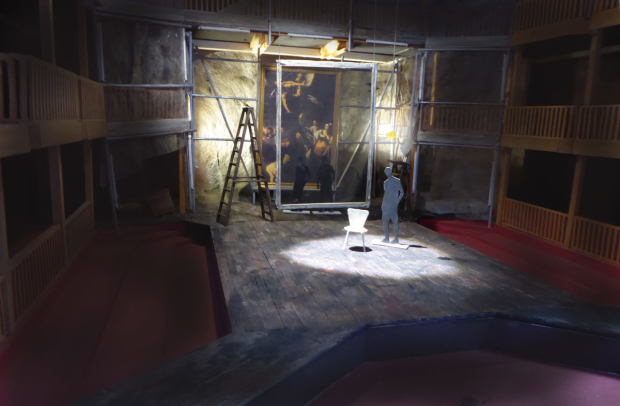Let's Talk About Sets: Tom Piper on The Seven Acts of Mercy
The designer of the RSC’s production of Anders Lustgarten’s new play explains how the set jumps from the 16th century to modern-day Liverpool

Bold, hard-hitting and political this new play by Anders Lustgarten, directed by Erica Whyman, fuses Caravaggio onstage, working on his painting The Seven Works of Mercy, which inspired the play's title, with contemporary Liverpool and a family drama about a dying ex-docker teaching his grandson about social values through the medium of art history.
It works brilliantly and examins the meaning of compassion and charity in our lives and how art can and should be a means for social outrage and change. As it is in the Swan, we have the additional challenge of bringing a piece of new writing to life in the warmth of its wood and brick, great for evoking a church in Naples 1606, but not so good for various locations around a council estate in Bootle.

© Ellie Kurttz
In both locations in the play the environments are being rebuilt so I have gone for a very simple cladding of scaffolding and builders netting, which hides just enough of the building to allow us to imagine we are in either location, and also provides surfaces for video designer Nina Dunn to explore ways of depicting all the various paintings referred to in the script. We are resisting using video as 21st century texture gobos and instead use details of paintings to give life to the environment. A central frame with a screen acts as the key for all the images which are amplified, and giant fragments of the paintings emerge on all the framing structure.
One of the biggest challenges is how to represent the development of the painting and how Patrick O’Kane, playing Caravaggio, was actually going to paint. I didn't want the set to focus on how he paints – it is what he creates that is important. We have abstracted the painting process by having a wheeled gauze screen, the same size as our main screen, as his working canvas. This is brought into the space and we can see through to both the actor working on the 'canvas’ with a ghostly projection of his progress and also behind him on the main screen a clearer image of the painting's developments. So with this simple abstraction he doesn't need to even apply paint and the audience can concentrate on the themes rather than the practicalities of how he worked.
By Tom Piper
The Seven Acts of Mercy runs at the Swan, Stratford-upon-Avon until 10 February.












